Alessandro Mistretta, Bruno Izzi, Fabio Zivoli, and Tony Pecoraro are four friends in different professions living in different Italian cities, who started their art-collecting paths from different points. Then, in December 2018, they decided to join together to become one stronger collection focused on contemporary art by young and emerging artists. They describe themselves as medium-low income employed who may not have access to important artists, valuable artworks, relationships with important galleries, thus the name Underdog Collection.
For the first time in The Talks, LARRY’S LIST talked to four collectors in one interview. While busy on the hunt for their 100th artwork in the collection, Alessandro Mistretta, Bruno Izzi, Fabio Zivoli, and Tony Pecoraro discussed why they are attracted to young artists and contemporary painting. They also revealed what happens when they do not agree, their latest purchase, their most treasured artworks, and how following artists on Instagram is a sort of intelligence work. Don’t miss out the four post-90s artists’ names recommended by these four collector friends.
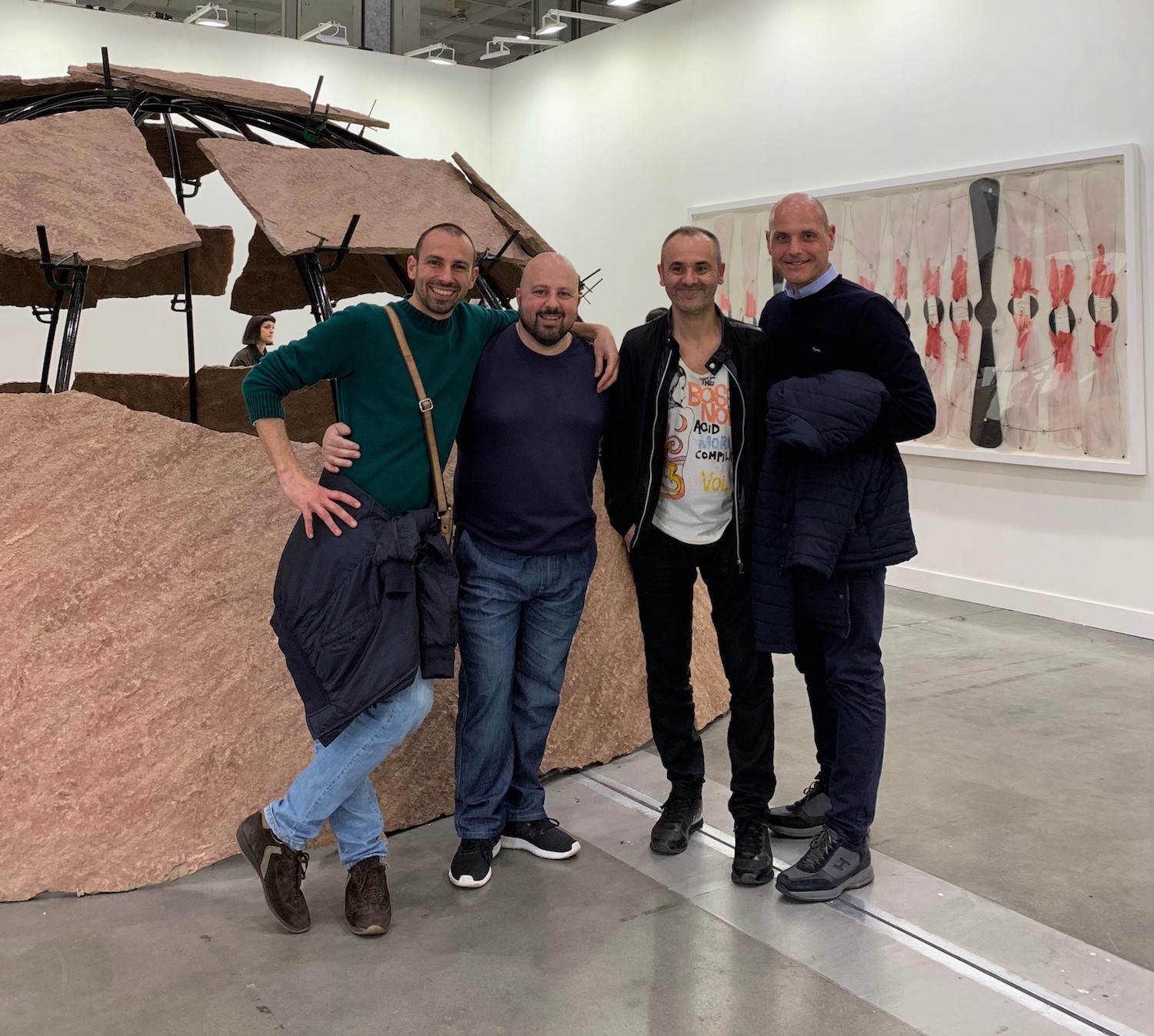
Collecting
How did you start collecting art? What motivated you to unite together to build one shared collection?
Tony (T): I started collecting emerging artists in 2013. I was attending a forum online focused on contemporary art, and I was seduced by the things an expert collector of emerging artists was writing. I didn’t have, at that time, a solid artistic background and so, I was immediately fascinated by the new languages like video art and sculptures.
Fabio (F): I started collecting in a very unusual way. I moved into a new apartment 8 years ago, and I felt the need to put something colored on the white walls and to embellish the environment. I was not interested in art at that time, but I started visiting a small gallery run by a friend in my city. I decided to purchase two small portraits on canvas made by a young and local artist. Now he is not an artist anymore, and the gallery closed some years ago while, instead, in the meantime, I have literally become crazy for art.
Bruno (B): I’ve always been an art lover. In 2015, there was a breakthrough after I saw the works of two artists, Tschabalala Self and Rachel Rossin, who represent two different aspects of society narrated through two different media. Both have made me understand the infinite expressive potential of contemporary art. My first acquisition was a work in VR by Rossin.
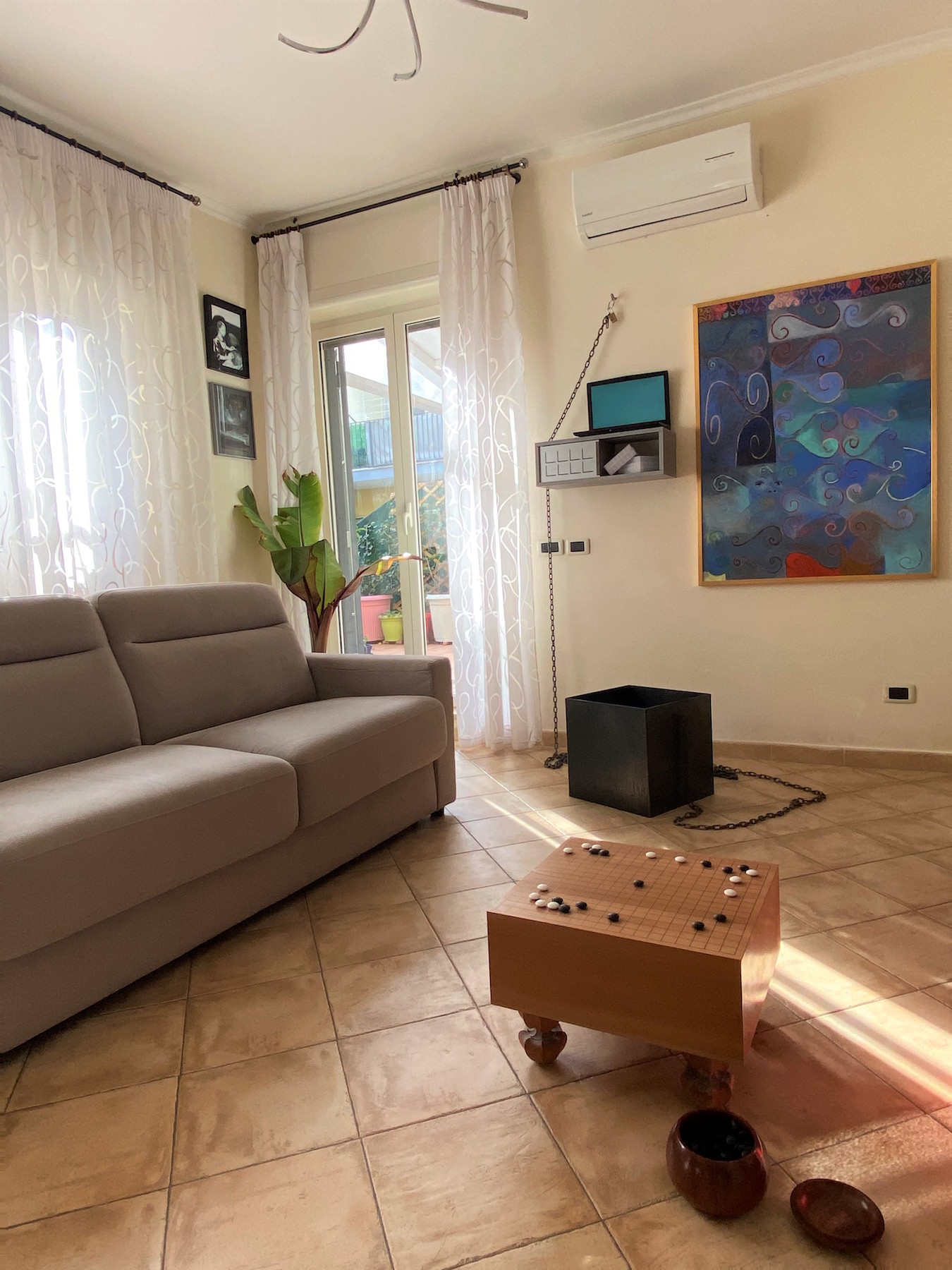
Alessandro (A): I started in an unusual way, following telesales only after listening to simple but effective words from the salesman.He kept suggesting to study and visit exhibitions, museums, and fairs, and I realized that there was a whole world to discover. On one occasion, i did the first purchase (even though now I would define it a mistake), but from that moment on I spent 3 years visiting museums, fairs, and exhibitions around Europe without buying other artworks, and I had the vivid sensation that passion for art was blowing up.
Underdog Collection (UC): Our unique and shared collection was born because we would like to grow up fast and become a point of reference for the contemporary art scene. We don’t say that with presumption but with the awareness that we could be one of a kind. This would be unachievable by remaining single collectors. We are medium-low income employed and so, important artists, valuable artworks, relationships with important galleries were not accessible to us. For this reason, we decided to band together. Our special feature is to study hard, to make a huge research trying to find out talented artists that will be important in the future and support them. That is why we have in our collection very young artists, the majority of whom became part of our collection when they were under 25/26 years of age at their first show or often when they were not represented by gallery yet (Tschabalala Self and Jonathan Lyndon Chase were acquired in 2015 and 2016 for example). We would like to think that passion, ideas, and commitment, rather than having huge economical means, could build a better collection in a medium/long term. At the end, we think that the name we choose for the collection, Underdog, explains everything.
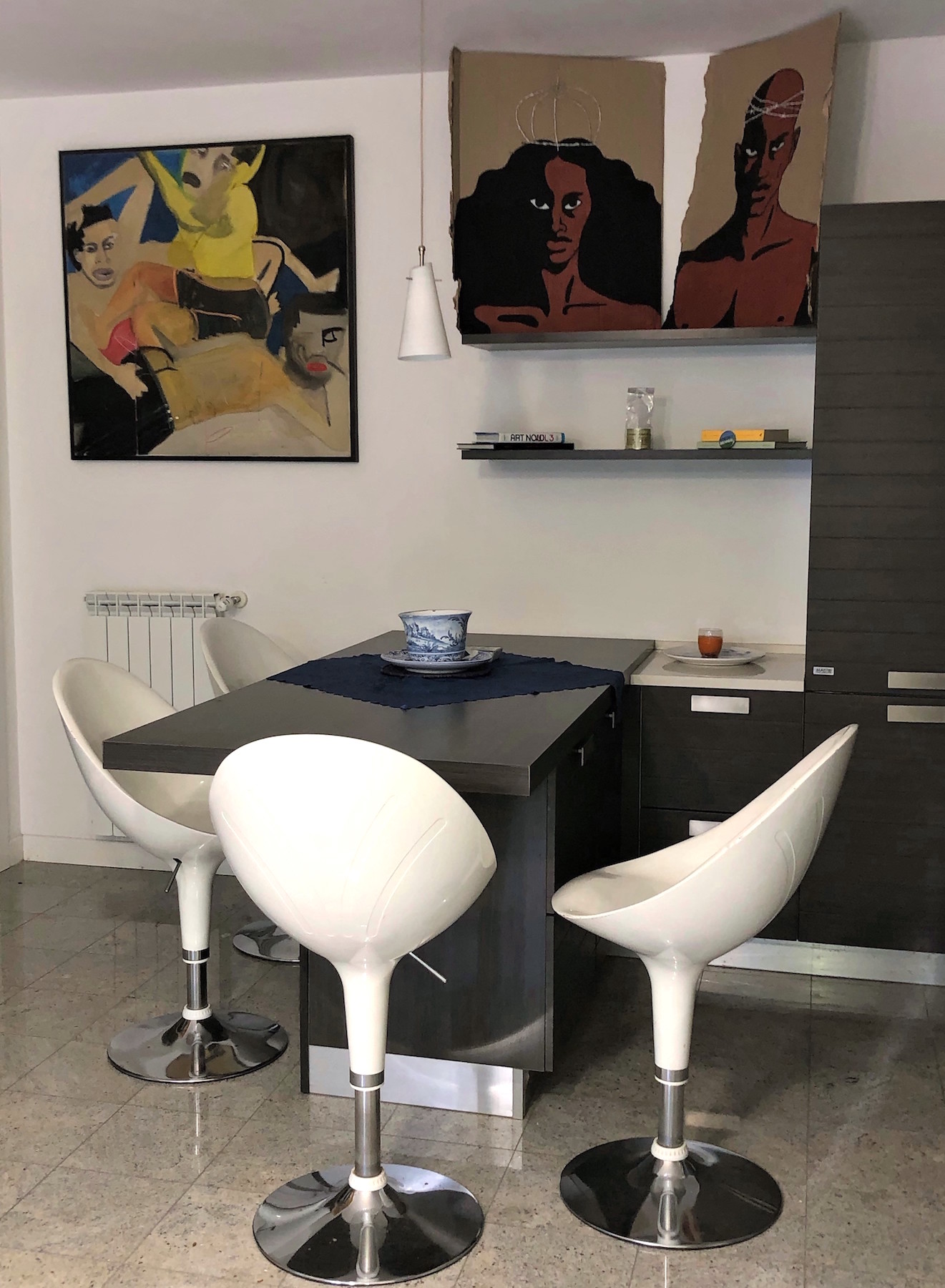
Why do you have a focus on emerging artists in your collection?
UC: I think the main reason is because we are very curious about what’s going on in the society that surrounds us. We are living great changes and witnessing big issues in these last years— themes like gender, cultural and racial identity, the role of the women in society, etc. So, we feel deeply the necessity to face these changes, and what’s better than listening and looking at how artists narrate and describe the whole thing.
Young artists look at the world with the same eyes of us, but they always do it with an original, unexpected, and always new points of view. That is what fascinates us.
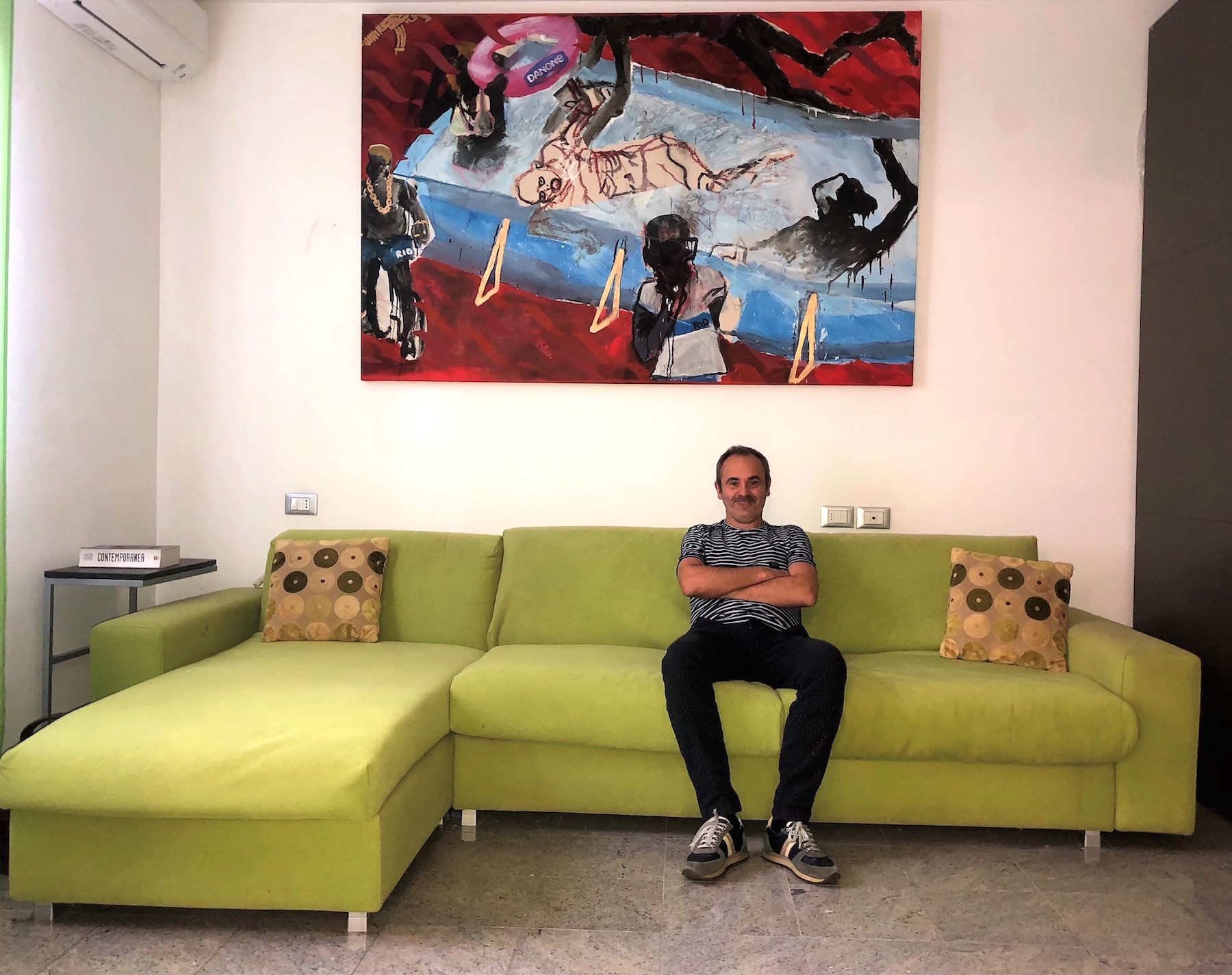
The majority of your collection is painting. How does contemporary painting attract you?
We are very fascinated by paintings. We think that paintings will always be the most powerful way to depict all the phenomena around us— important issues but also more light-minded matters.
We think about, for example, the suggestions in the works of Jonathan Lyndon Chase with the figure of black queer boys in the intimacy of their domestic life, or the power of the Maxwell Alexandre’s paintings narrating the stories of black people killed in the favelas or the lack of schooling in poor areas of Brazil.
When we look at the paintings, we can’t avoid reflecting, but we are also captured by the beauty and the poetics they gift to us.
However, in the last months, we are also adding some sculptures to our collection, and we are rediscovering this medium, and the playfulness in the sculptures of Yuli Yamagata and Daiga Grantina, for example.
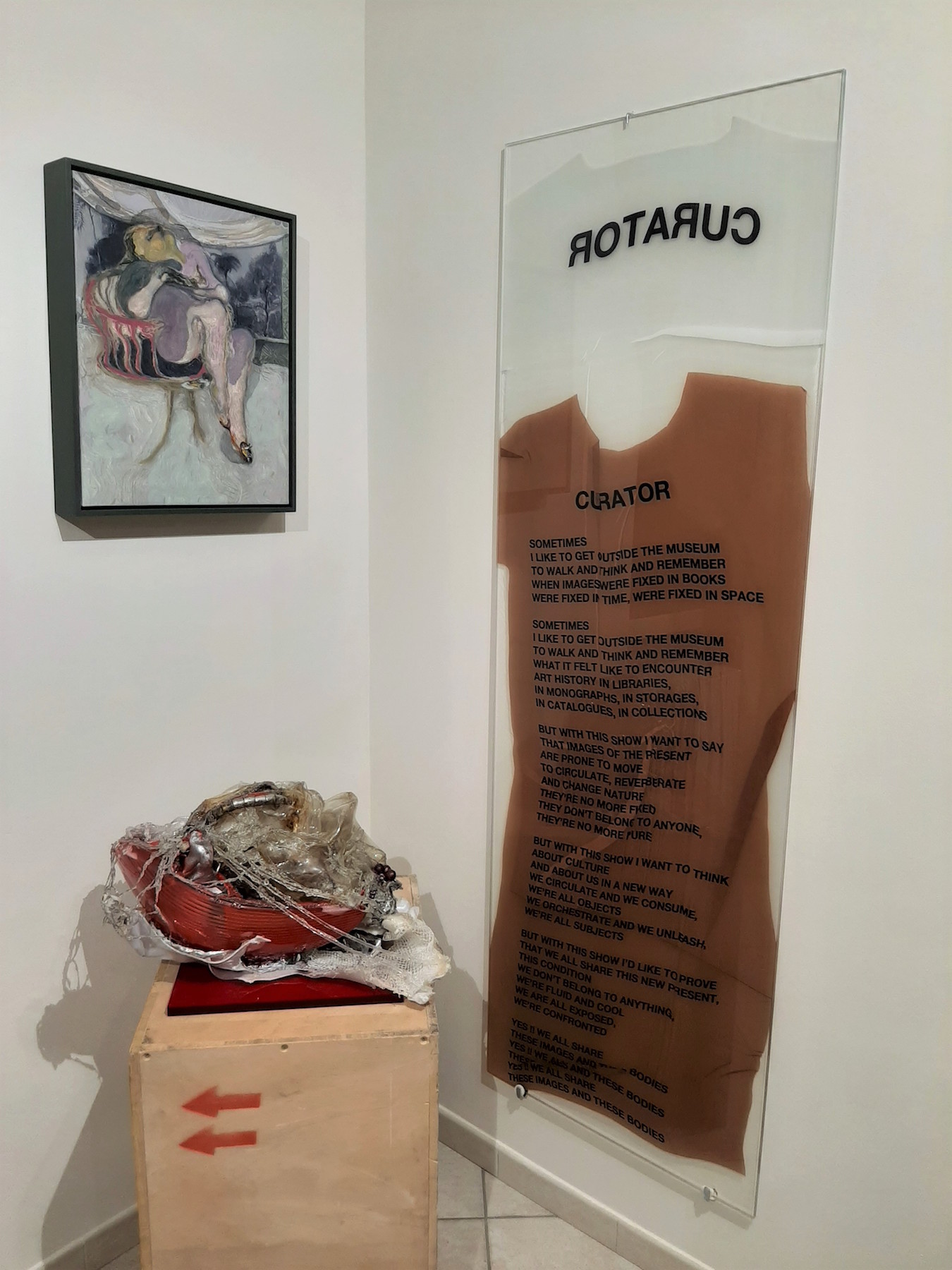
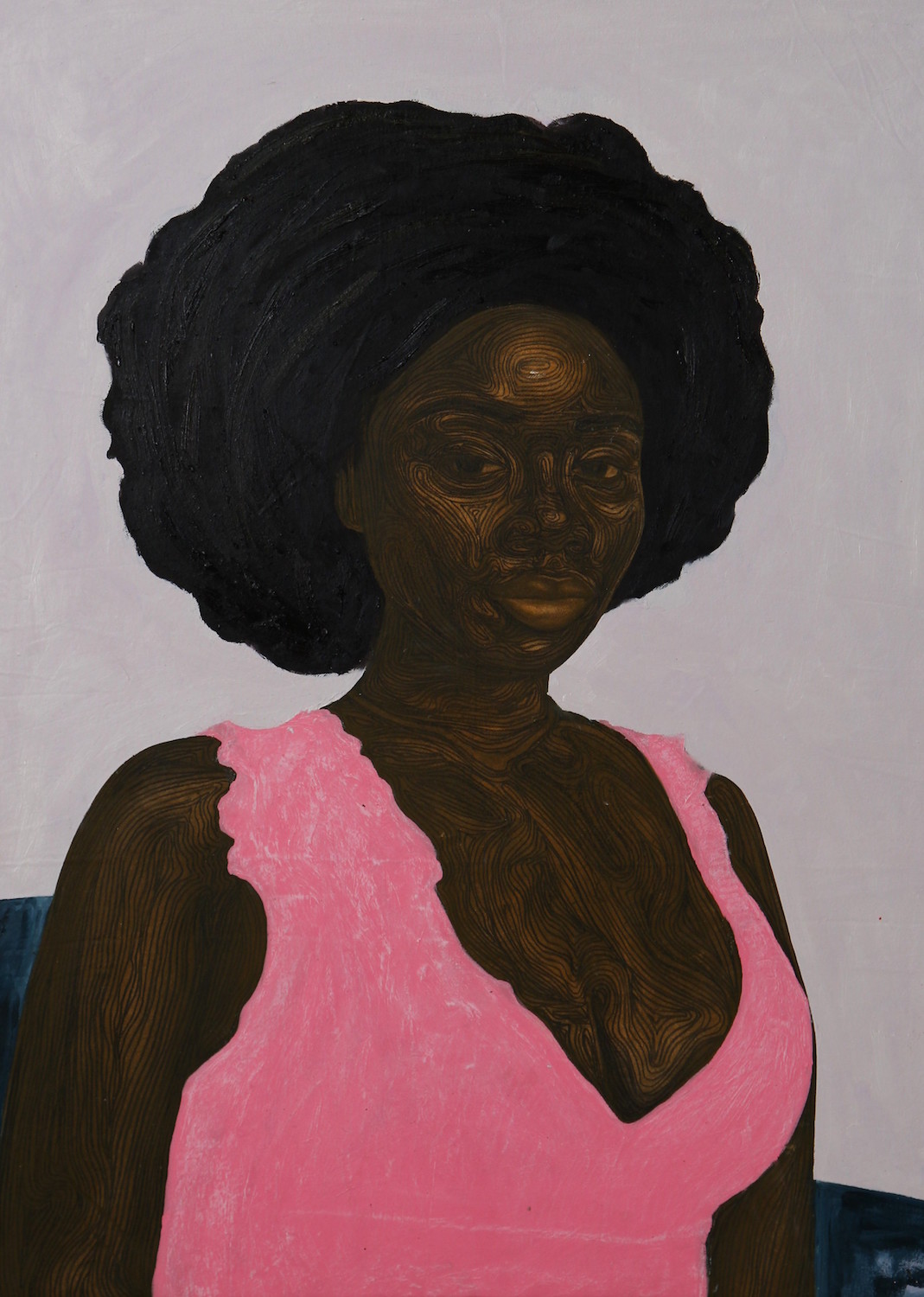
What were the first and the latest artworks you purchased?
UC: The first work we purchased for Underdog Collection was a sculpture made by South African Artist Bronwyn Katz that represents 4 of the five most famous Diamond Mines in South Africa. It refers to the idea of memory, exploitation, and poverty.
The last work is a painting by a very young Nigerian artist (born in 1995): Collins Obijiaku, purchased from a brand-new art gallery, named “ADA Contemporary Art Gallery”, based in Accra, Ghana, that inaugurated with a solo show of Collins.
How many artworks do you own altogether? Where do you display your collection?
UC: Our collection is increasing very fast, especially in the last months. We will get to the 100th artwork soon, and we think we will achieve this goal until the end of the year. We display our collection in our houses for the moment, even if our dream, in the future, would be to bring them all and exhibit them in a unique space, open to the public.
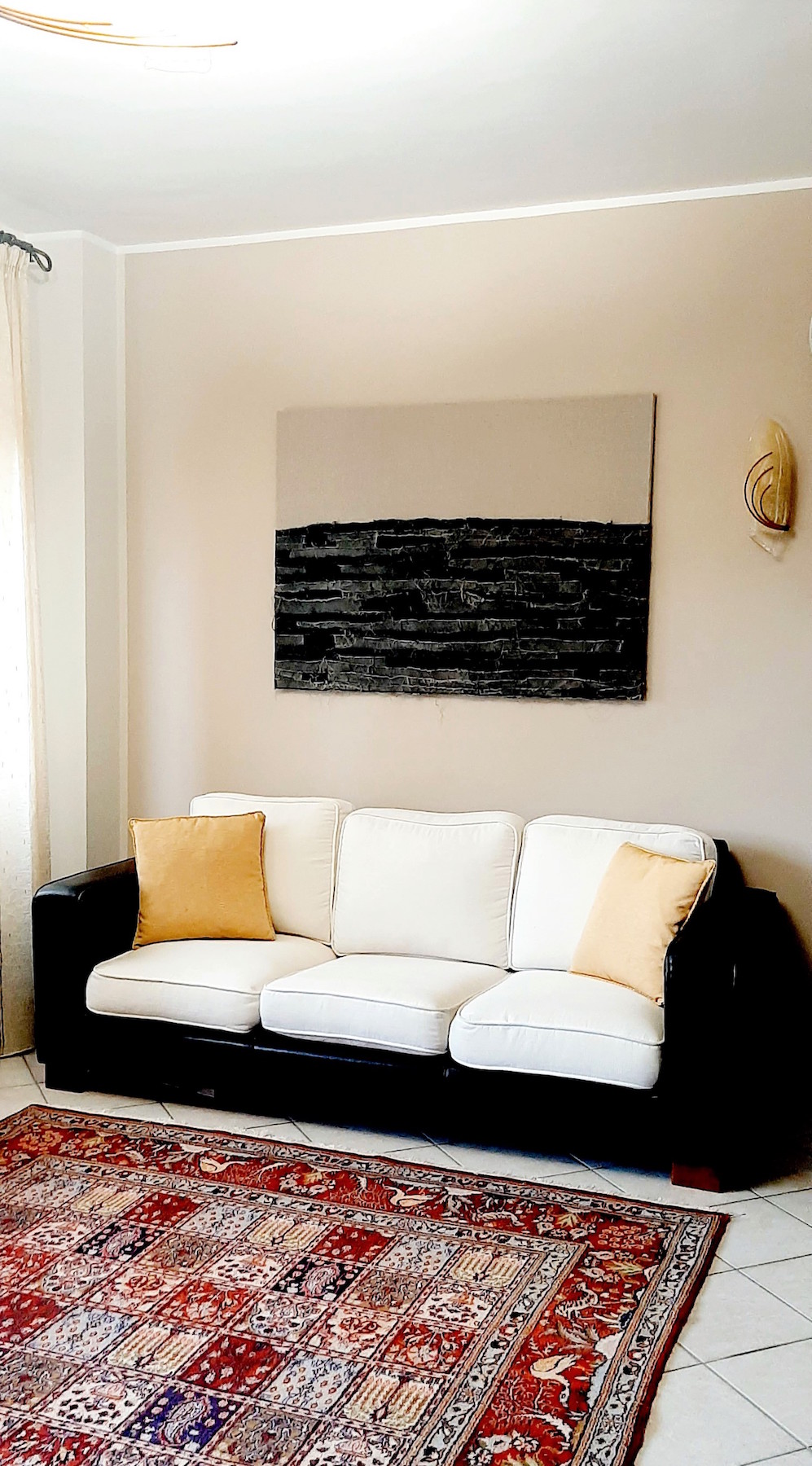
The four of you are from different backgrounds and professions. Do you have different roles within the collection?
UC: We could say we are all focused on discovering new, young and talented artists.
We have also to deal with our professions, so we try to spend all our free time engaging in our passion for art, even if it’s not always possible to set aside all the time we would like to.
One thing we are proud of is our website. Bruno and Fabio, but Bruno mostly, built it, developed it and keep updating it day by day with acquisitions, news about the artists, images, and press articles.
How is the decision process among the four of you before any purchases? What happen when you do not agree?
UC: We spend a lot of time on Instagram and on the websites of galleries and artists.
Each of us, according to our individual tastes, finds out and suggests names to others. We follow hundreds of artists, and every week we try to search for updates, news, etc. We chat with one another from the early morning to the late evening all days on WhatsApp, trying to make a synthesis of our ideas and tastes, and sometimes we also argue, but when each of us is enthusiast about the same artist, and we think the artworks are powerful, touching, and meaningful, we make the acquisition for the collection. Sometimes, when one of us falls in love with an artist that others don’t like too much, the acquisition is made individually. Less than 30 percent of our collection is not shared by all four of us.
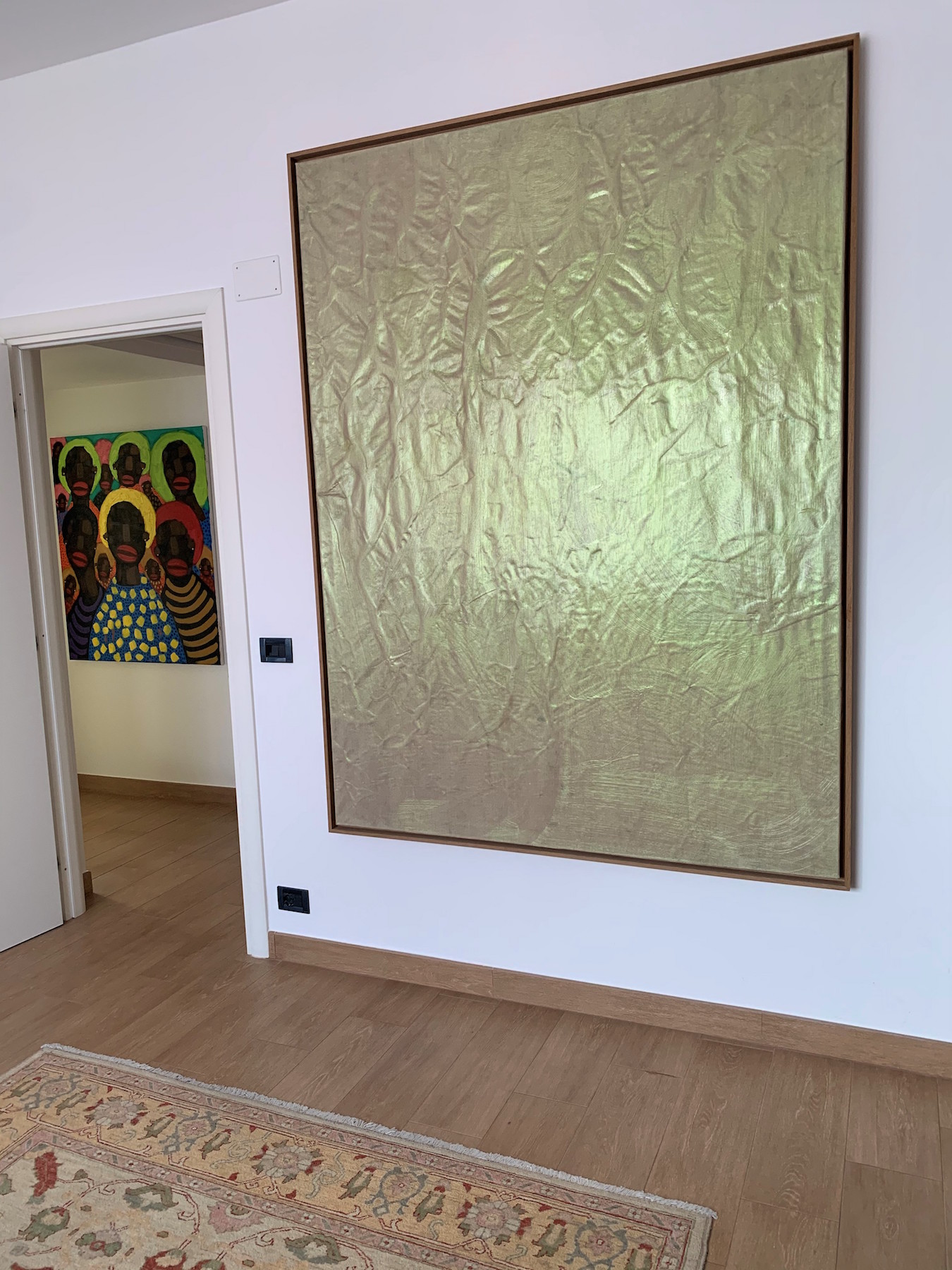
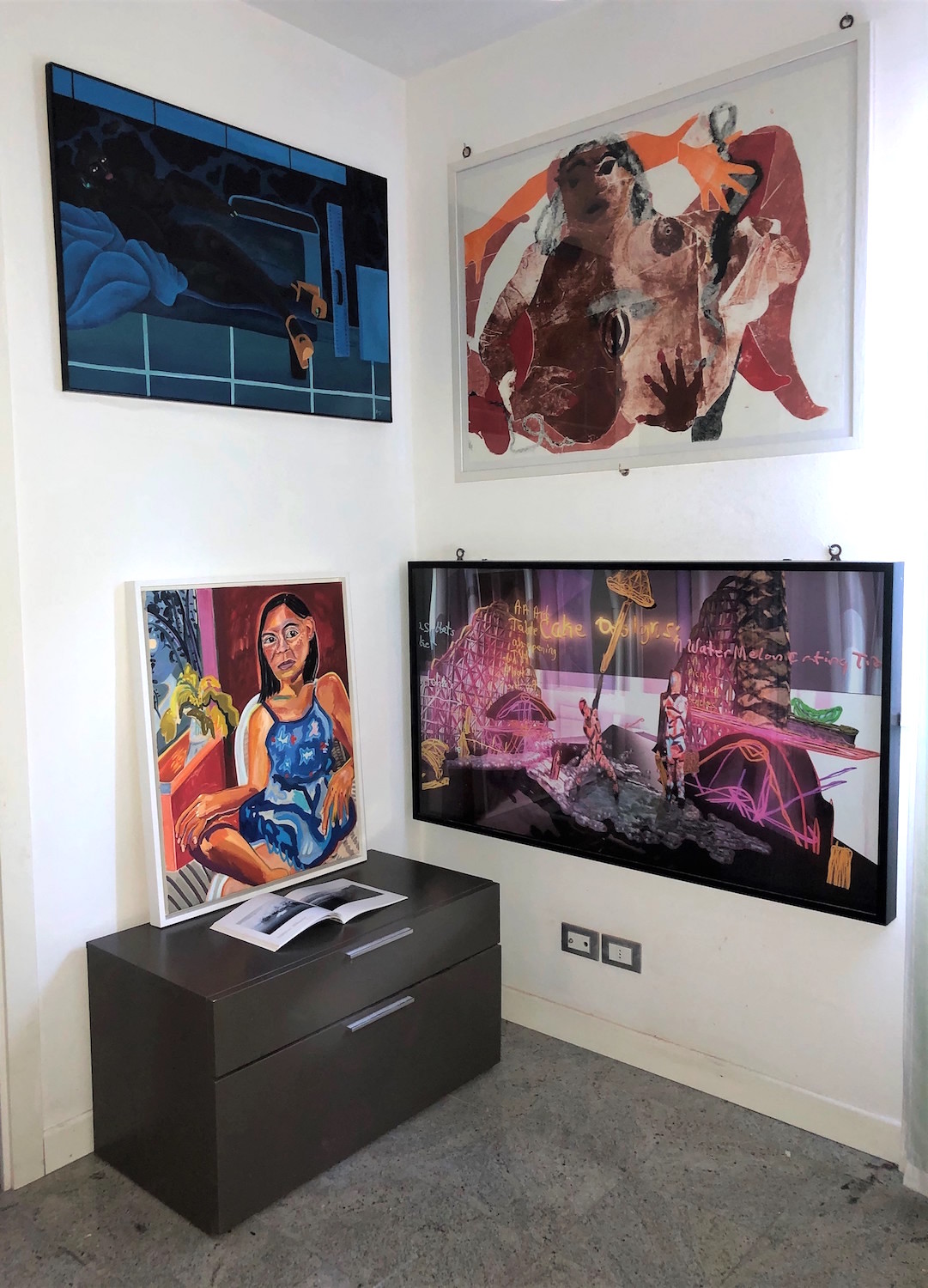
What is your most treasured artwork?
F: it’s a big abstract work of Paul Czerlitzki, a Dusseldorf-based artist born in 1986, that I can’t stop looking at. Everyday and every moment of the day, as the light changes, it seems to look like a new work. It’s never the same. It’s magic for me.
B: it’s the sculpture of Anna-Sophie Berger. It talks about our perception between public space and private property; it’s a hybrid between freedom and constriction symbolized by the chain. I like to play with it, sometimes I place it outdoor, or indoor at some other time as suggested by Anna-Sophie.
A: It’s an installation by Elle De Bernardini— two sculptures representing two transexual bodies: one referred to a person forced into prostitution depicted with rounder shapes and the other referred to a luckier person that wasn’t forced into prostitution depicted with less prosperous forms.
T: A sculpture made of glass by Lili Reynaud Dewar. The work titled “The Small Tragic Opera of Images and Bodies” project aims to raise reflections and ask questions about the themes of identity, representation, art and its institutions, the complexity of relationships, and the difficulty of communicating and confronting. I’m also proud because this specific work was loaned in 2019 to Belvedere Museum in Vienna.
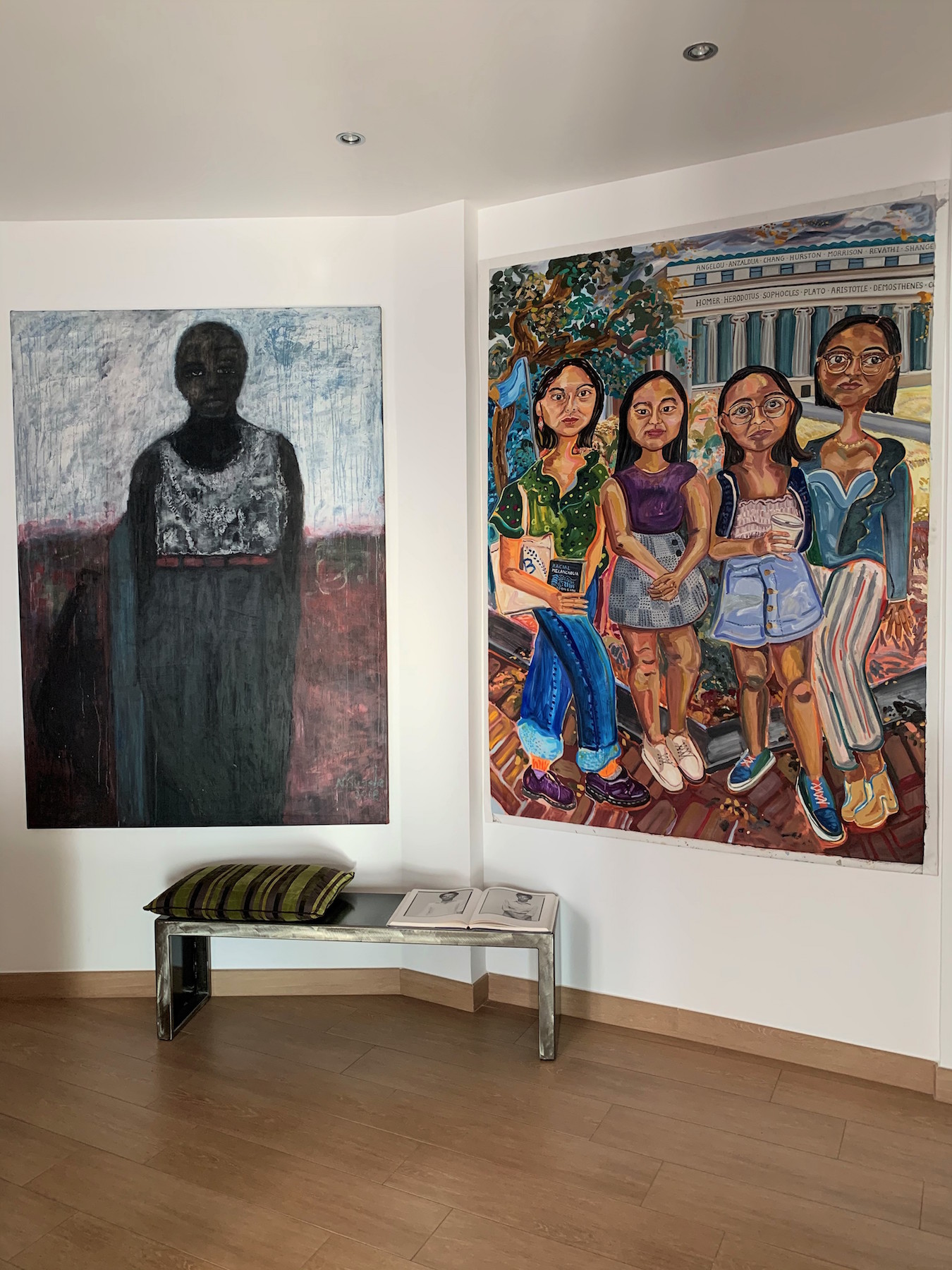
Why is it important for you to meet the artists who created the artwork?
It’s not about physically meeting the artists, we also know it’s not always easy to talk to them, get to know them, and to create a friendly relationship with them. Our primary goal is to deepen our understanding of their artworks because as young artists, very little is available in terms of images, documentation, and interviews about them. Most of them are still students, and talking to them helps us understand where they come from, their ideas, their ambition, and their will to narrate their unique stories.
How do you follow and support the artists you collect?
We mainly follow them on social media and interact with them via WhatsApp or Instagram. We always try to become friends of the artist because we think this is the only way for us to support them over time, not just by buying their works, but also by referring them to other important collectors, curators, and gallerists. We also give them practical advice if they ask. We think it’s important to protect them right away, help them entering good collections. Right steps can change their whole career, and some of them have already thanked us for this.
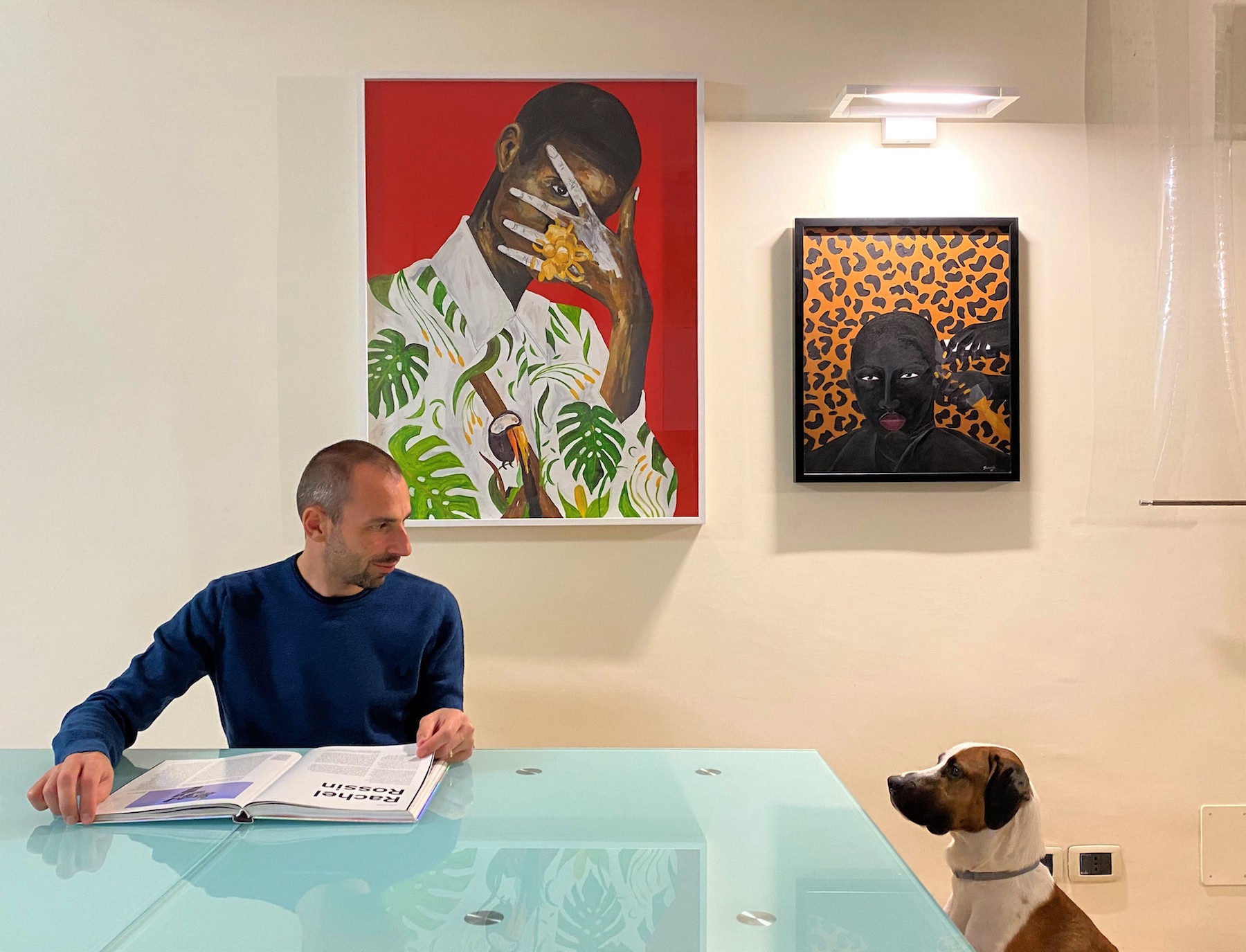
How do you discover and research on new emerging artists? What considerations guide you to make a purchase?
As we said previously, we spend a lot of time on Instagram. We think this is the best way, now, to see artists and look at their artworks. Instagram is also useful because we can investigate about which galleries are planning shows with the artists we are interested in, which are the collectors that follow these artists, and we also read the comments on the artist’s posts trying to find out interesting news. It’s a sort of intelligence’s work.
Then, at the end, we put together this information, which we use to decide whether to add one or more artworks to our collection or not.
We are recently experiencing a rising interest, especially on Instagram, about the economic present and future value of the young artists. A lot of collectors spread information about how the future of the artists will be in terms of economic revaluation, trying to make choices giving importance to this aspect. Then, you see enthusiastic congratulations towards artists from the collectors that made the acquisitions, and after one or two years, you see these artworks in the auctions. We would be liars if we say we don’t care about a future revaluation of the artists in our collection, but we prefer to see them growing in terms of exposure, doing wonderful shows in museums, institutions etc. That is why we try to be by their side along this path from the very beginning.
You also spend much time on updating your collection website and your Instagram profile. How important are these as part of your collecting habits?
A lot! It’s a fast and direct way to show who we are and what we collect. It is our main calling card and, as such, it needs to be always perfect and up to date. Some gallerists are very protective of their young artists; they want their works to be in valuable collections. The website, as our Instagram page, helps us get to galleries that would otherwise be inaccessible for us. It helps young artists understand who we are. It helps them build trust in us and keep the relationships alive.
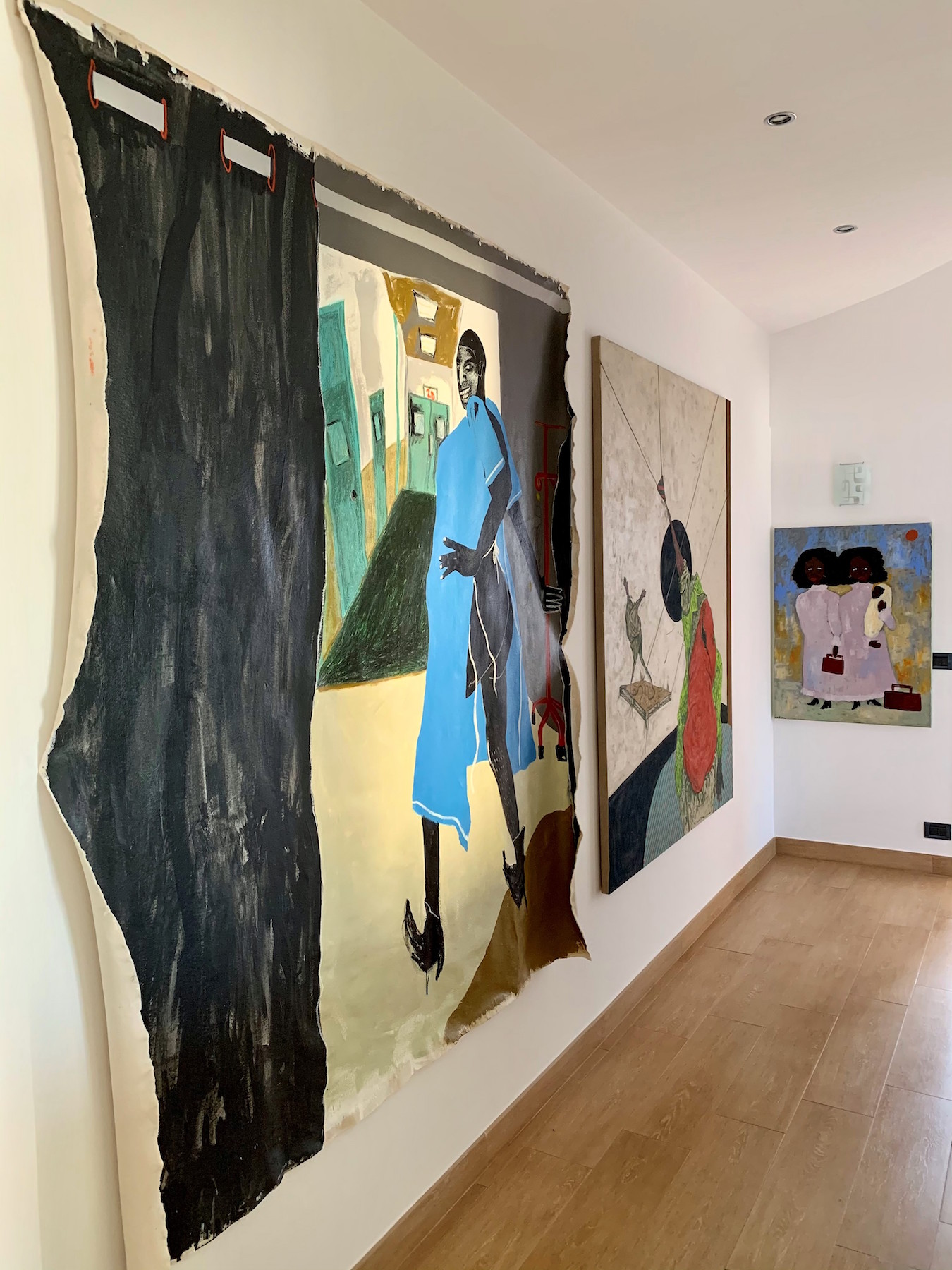
What are your visions for the Underdog Collection in the upcoming five years?
In the near future, we would like to plan an exhibition of our collection, to promote and make our artists known even more than now. We collect artworks not only to own them, but because we feel strongly the need and the pleasure to have them exhibited. We are also planning to establish a residency program for artists, in order to support emerging young artists from the very beginning, to help them with their first steps in the artworld. We are, at the end, trying to build even stronger relationships with galleries and important collections.
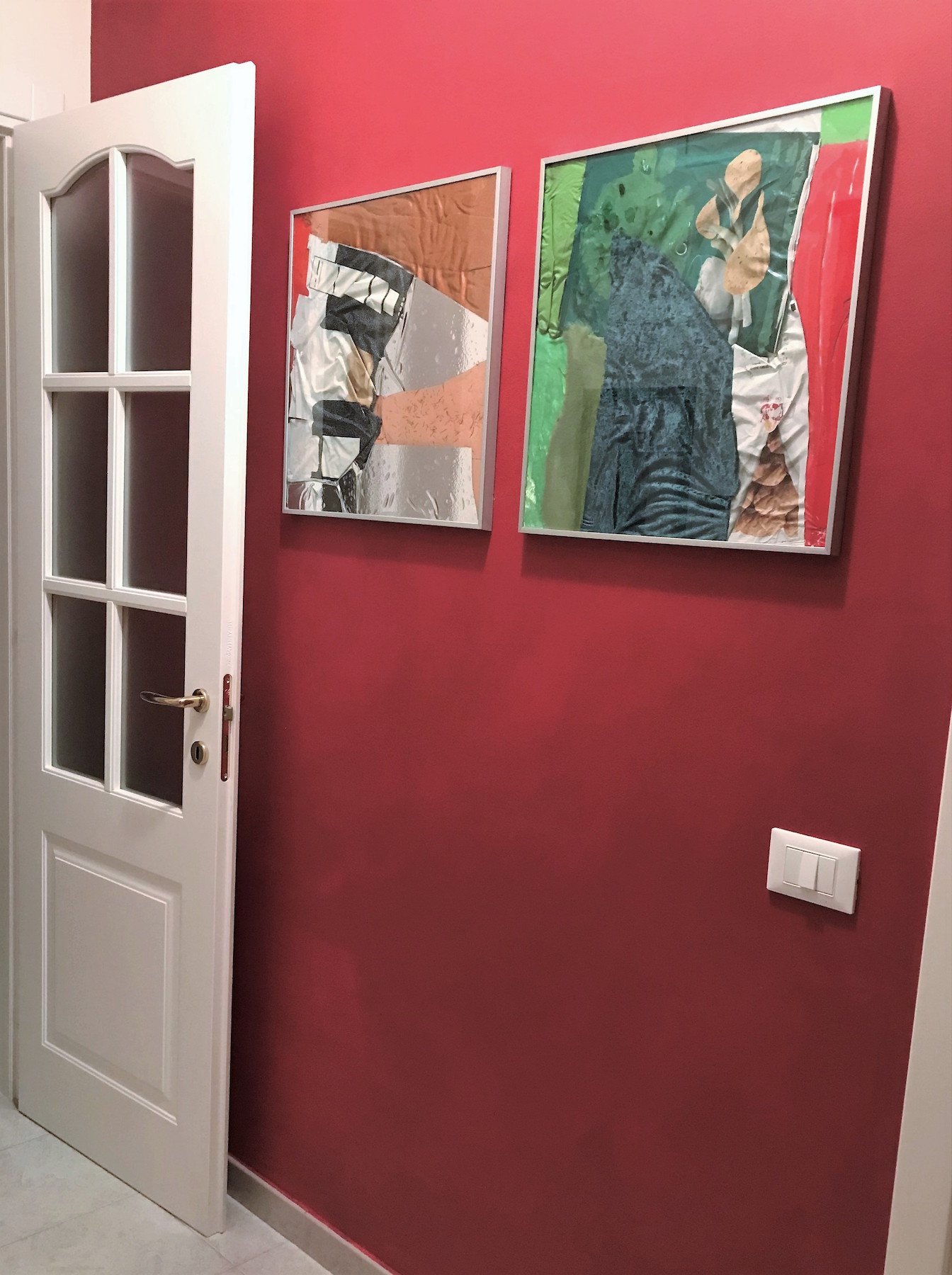
What was your happiest moment being involved in art?
T: In my opinion, the whole act of collecting gives emotions: the moment you discover a new artist, and you look at an artwork, and most of all, the moment you talk to the artist in person. In the eyes of the artists, I am just one of the many collectors that are purchasing one work; but, in my eyes, the artist is all that I wanted to discover and be a part of in the future.
B: When we attended a talk at the fair ArtVerona last year to speak about our collection. It was a great emotion looking at people among the public captured from what we were talking about and being curious about our story. This made me realize that we gave birth to something special.
A: I think every day is a happy moment talking about the collection because I have the awareness of building day by day something important with friends who share a common passion. Because, most of all, we are not only collectors but great friends.
F: When we were interviewed by an important Italian newspaper for the first time in December 2018. It’s been less than two years. I still can’t believe how many things have happened to us in the meantime. At that time, we were only single collectors. That interview was the spark that gave life to the project of Underdog Collection.
Can you name some emerging artists who should be on our radar?
We will make four names, one each. We are quite sure that these artists will have a bright future. So, collectors, please take note.
F: Agata Ingarden, born in 1994, Paris-based artist.
A: Mosie Romney, born in 1994, New York-based artist.
B: Lydia Ourahmane, born in 1992, Algeria.
T: Sophia Yemisi Adeyemo Ross, born in 1999, Rhode Island.
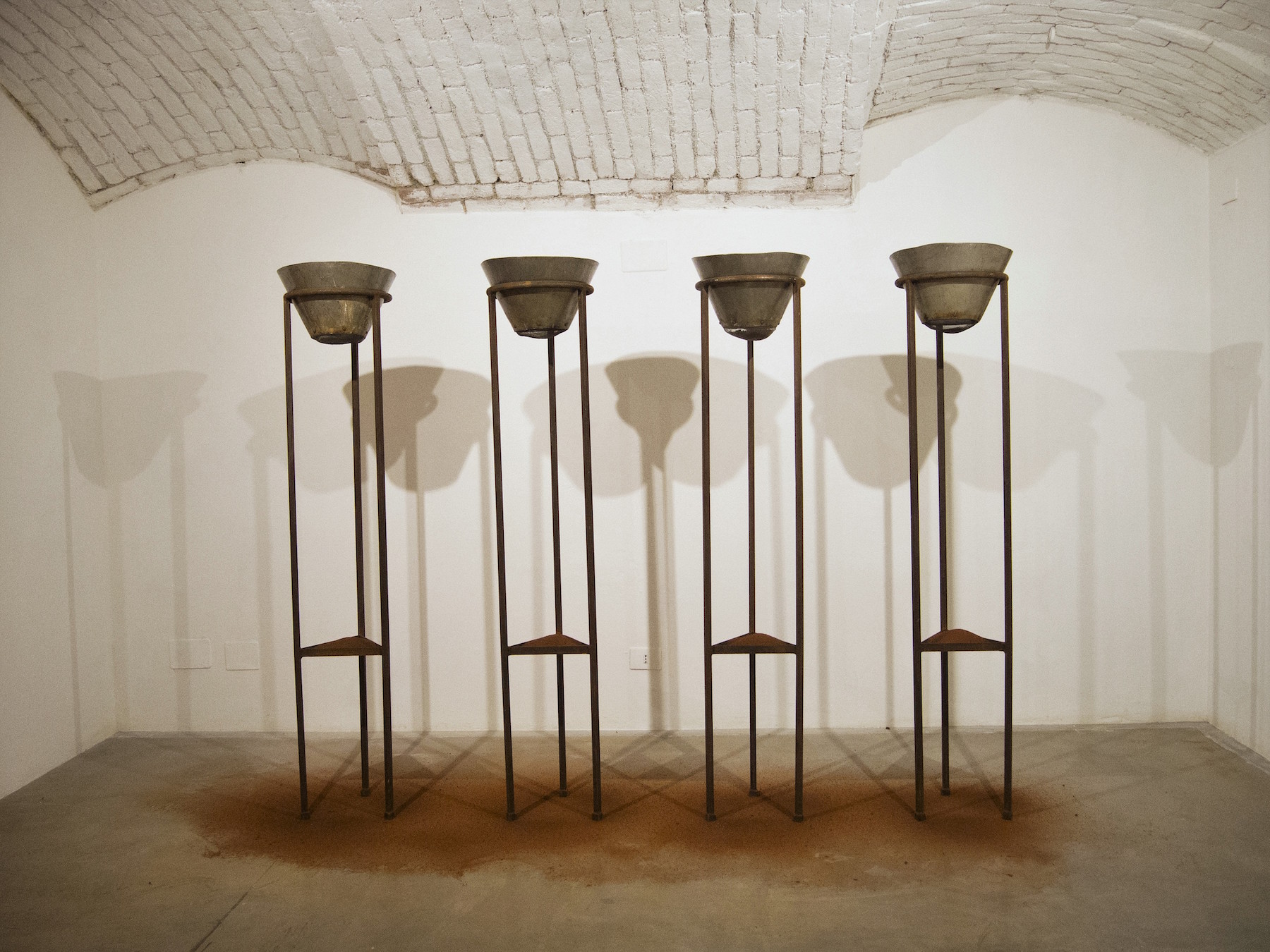
Related: Underdog Collection
Instagram: @underdogcollection, @tony76p, @br1art, @ilfabioz, @amistretta
A selection of artists from the Underdog Collection:
Daiga Grantina
Lili Reynaud Dewar
Mosie Romney
Susan M.B. Chen
Tschabalala Self
By Ricko Leung





